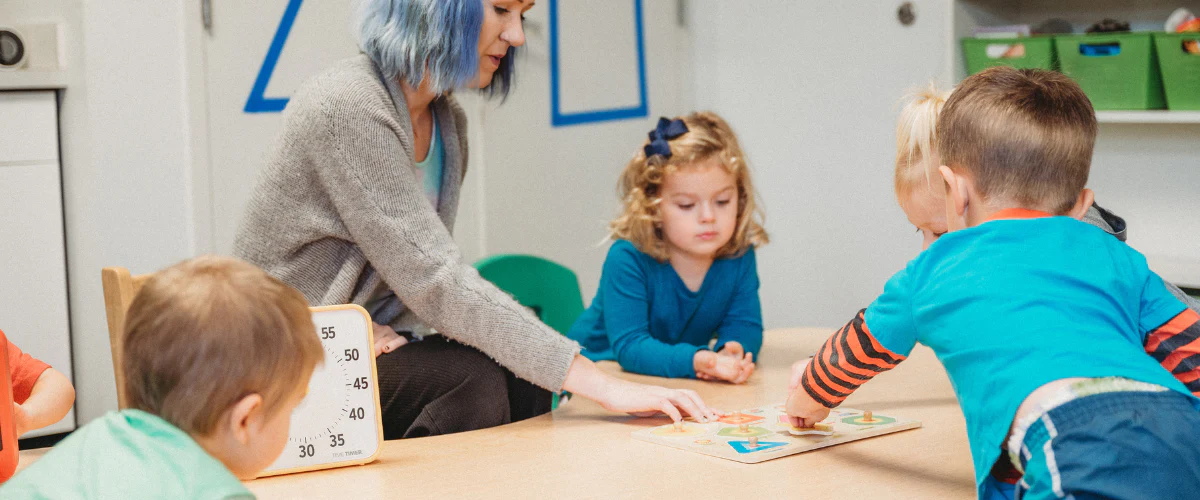
Classroom management systems effectively manage children’s learning and behavior, sustain an orderly environment, enhance academic skills, and further social and emotional development. We know that effective teaching and learning cannot take place in a poorly managed classroom. Because this is a top concern of teachers, they need resources and tools to help them understand and implement strategies to provide this critical ingredient for optimal learning.
As an early childhood teacher, you have many roles. Of course, your most important role is to keep children safe and healthy and to provide opportunities for their development and learning. You also support their families and use management skills to ensure the smooth operation of the classroom. You may not see yourself as a manager, but you plan a program that meets the needs of each child and the group of children. You create a supportive learning environment, guide children’s learning, and assess their progress. Essentially, you manage the program you provide for children.
There are many classroom management strategies that can be implemented to create a well-managed classroom, this blog will address three main ones:
1. Rules
Teachers (and children collaboratively) should develop a limited set of positively stated expectations for behavior. These expectations should not simply be posted in the classroom but should be discussed and practiced regularly. The teacher can do this by reading stories about rules, posting rules with pictures for children to see and understand, and explaining why the rule is important, for example, to keep our friends and classroom safe.
2. Routines
The daily schedule and routines form the basic structure of the day. If these are planned to meet children’s developmental and individual needs, it should make the day go more smoothly and, therefore, be enjoyable for everyone involved. Children thrive in a well-ordered and predictable environment where arrivals and departures, mealtimes, nap times, and toileting are dealt with consistently. Daily routines offer children a sense of stability and a feeling of safety and care from their teachers. To help children understand the schedule and the sequence of events in their day, create a poster of your schedule with pictures depicting the various parts of their day. For example, arrival, clean-up time, group time, storytime, outdoor play, snack, center time, and departure.
3. Transitions
Transition times can be chaotic, but paying attention to them can make a difference and is essential for effective classroom management. If transition times are difficult, you may not be giving children sufficient notice that a transition is coming. It is important to give children enough warning (typically 5-10 minutes) before asking them to move on to another activity. A timer or auditory signal such as a bell will let children know that it is almost time to switch centers or to get ready to go outside, clean up, or go to lunch. For older children a visual timer will keep them on track to prepare for the next activity. Either way, letting them know that they have time to finish building in the blocks, doing that puzzle or finishing their painting will help them be more willing to successfully make that transition to the next activity.
As teachers we hope the children we teach will be curious, self-confident learners that have strong social skills and can get along with their friends. We want our classrooms to be a place where all children feel safe, comfortable, and ready to learn. Ultimately, through establishing routines, smooth transitions, and setting clear, reasonable, age-appropriate rules or expectations, you can set a positive tone in your classroom and effectively optimize learning.
About the Author:

Jody Martin has 40 years of extensive and diverse experience in the early childhood field. She taught preschool, directed a childcare center, and was the Vice President of Education and Training for a national childcare company. Presently she is the Senior Developmental Editor for an early childhood publishing company. In addition to authoring curriculum for children infant through 5 years old, Jody has authored several books: Preschool Health and Safety Matters, Bringing the Outside In, and her book Rethinking the Classroom Landscape: Creating environments that connect young children, families, and communities, was awarded the 2017 Book of the Year. Her latest book, Through a Child’s Eyes focuses on classroom design. Jody has written courses for online training companies, and articles for early childhood publications. She is a dynamic presenter and recognized leader in the field of early childhood education with a commitment to providing quality programs for children.
